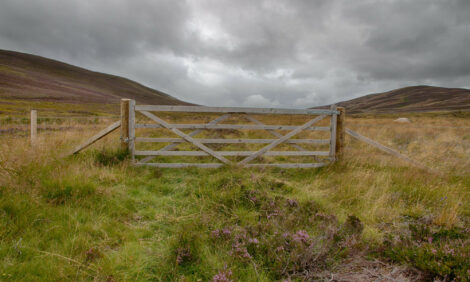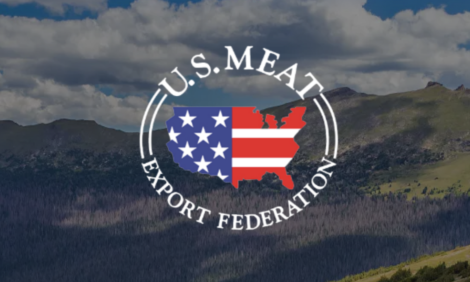



Veterinarians serve as biosecurity champions
Taking care of sick animals is no fun for anybody. For that reason, and so many more, biosecurity is a high priority for Clayton Johnson, DVM, with Carthage Veterinary Service headquartered in Carthage, Illinois. He considers it his obligation to say something if he sees a situation on a farm that could lead to a biosecurity breach. The saying, “What you don’t coach you condone,” is one he often refers to.“That’s really important for me to remember as I evaluate biosecurity on a farm,” Johnson told Pig Health Today. “If I allow something to happen on a farm without commenting on it, I’m not going to be effective in prioritizing biosecurity on the farm because I’ve essentially told them it’s not that big of a deal.”
Where there aren’t any pigs, there aren’t any pig diseases
Biosecurity is a higher priority in pig-dense areas than in non-pig-dense areas, and it should be, Johnson said. The disease transmission risk is greater there.
“The reality is, in non-pig-dense areas, there isn’t a lot of challenge,” Johnson said. “If we’re raising pigs in Alaska, we don’t need amazing biosecurity because there are no other pigs in Alaska to transmit disease to our farm.”
In pig-dense areas the situation is different, he explained. Porcine epidemic diarrhea virus and porcine reproductive and respiratory syndrome are two of the most talked-about issues on pig farms, but Johnson said veterinarians regularly deal with other diseases, too.
“Seneca Valley virus has come into our industry in the last 3 or 4 years,” he said.
Delta coronavirus is a rising concern, and Mycoplasma hyopneumoniae (M. hyo) remains an issue. Many sow herds have eradicated M. hyo, but sows can still be susceptible to an M. hyo infection, Johnson said. Swine influenza is another recurring problem, especially in pig-dense areas. These diseases highlight the need for good biosecurity, he added.
The veterinarian’s role
Johnson said the role of the veterinarian is “all-encompassing” when it comes to biosecurity.
“Our role is not only helping define the protocols and set the expectations,” he pointed out. It’s also about setting standards, determining how supplies, people and animals will enter the facilities, and how mortalities will be managed.
Veterinarians generally write the protocols and are heavily involved in training staff to use the protocols and understand why they’re important.
“We’re helping to create buy-in on the farm,” Johnson said.
Auditing the processes
“Veterinarians also are involved in auditing the farm on some level,” Johnson said. “We can have other folks help with the audits…but as a veterinarian, we have to audit [processes related to biosecurity] on every farm visit. You have to keep it as high on the priority list as possible, because if you don’t, nobody else is going to go there and evaluate it.”
Johnson visits sow farms on a monthly basis and has a checklist of questions related to biosecurity.
“I think a more aggressive biosecurity audit should be done at a minimum annually but ideally quarterly, where the visit is dedicated just to biosecurity,” Johnson said.
Farms that have air filtration systems need additional audits performed by trained technicians to make sure the system is working effectively. Over time, the ability to dig deeper into the “cracks and crevices” of biosecurity will allow the veterinarian to look at more factors, Johnson said.
Farm managers should be involved in the monthly audits as well as the more intensive quarterly or annual audits where biosecurity is the focus. Maintenance personnel and decision-makers who are involved on a financial level also should be part of the quarterly audits.
“If we find something big…we want to have the person who would ultimately be the decision-maker for approving that spend [with us] so they can see exactly what we’re talking about,” Johnson said. “If we have our maintenance folks there, they can help us with a cost estimate.”
Farm personnel can then decide if the issue is going to be addressed or if they’re going to accept the identified risk.
Risk management
“Biosecurity is risk management, and risk management is a continuum where you can choose to have 0% risk tolerance or you can choose to have 100% risk tolerance,” Johnson explained. “Each producer gets to select where they’d like to invest on that continuum.”
Johnson compared biosecurity to insurance.
“There’s probably a minimum level of insurance that you would recommend for everybody. But there are other tiers of insurance investment that an individual can choose to make,” he said. “Producers should ask themselves, ‘What’s the value of the herd? Am I trying to protect a multiplication farm in which the individual animals have tremendous value because of their genotype? Or am I trying to protect, say, a finishing barn that’s a small site and is just raising commercial animals?’ As the value of the animal increases, so should the biosecurity ‘insurance policy’ that you’re trying to buy.”
For example, a farm might determine that it needs a new UV chamber, because bringing supplies onto the farm is a common challenge. The veterinarian needs to assign a value to the investment.
“You look at the return on each of those individual opportunities, and it’s that return, generally, that helps you to rank it,” Johnson said.
Every farm has a budget, so it’s important to start at the top of the list with the higher biosecurity priorities, he added.
Be the champion
Veterinarians play an important role on a farm, and being a champion for good biosecurity practices is first and foremost, Johnson said.
“If you go onto a farm and observe something, and you don’t comment on it or take the opportunity to educate [the farm staff] of the risk that’s out there, you’re creating a situation where complacency can dominate,” Johnson warned. “Those behaviors will likely be repeated because the folks on the farm will say, ‘Well, Doc saw it and didn’t say anything, so it must be okay to do.’”
Secondly, farm personnel should focus on what they have that’s working.
“Use the tools you have,” Johnson said. “Don’t focus on the fact that your farm isn’t filtered, for example. Focus on making sure that you use the showers correctly and that you use your UV chamber correctly.”
Producers should use the technology they have while keeping biosecurity a high priority, he advised.






